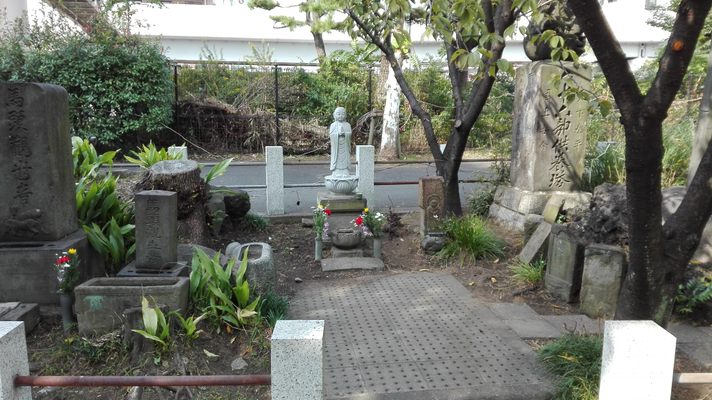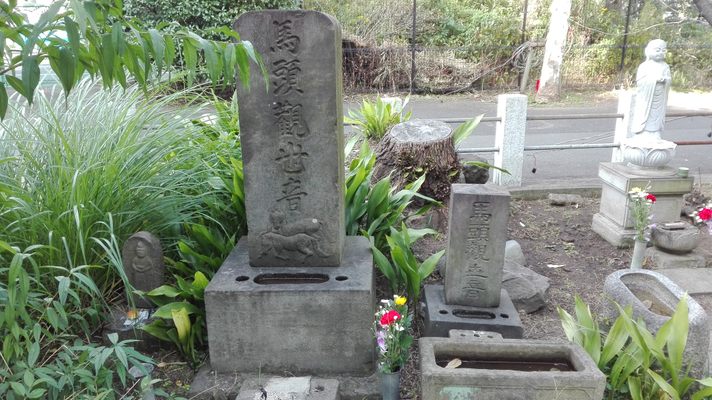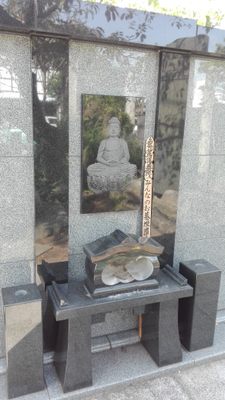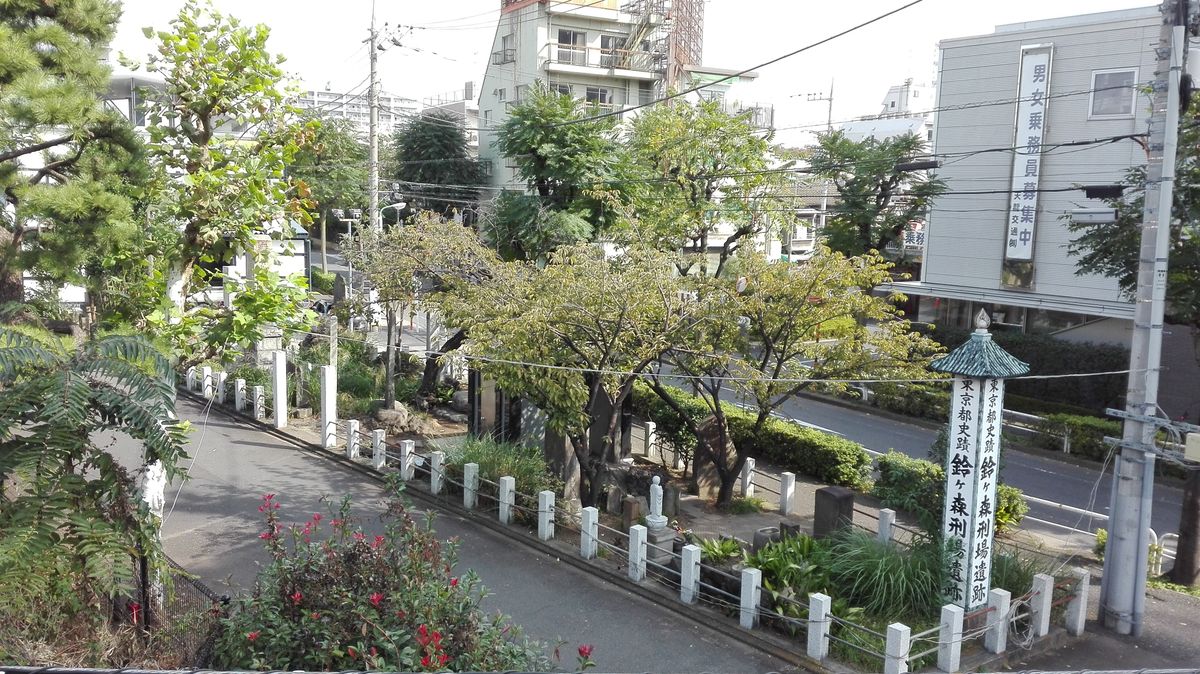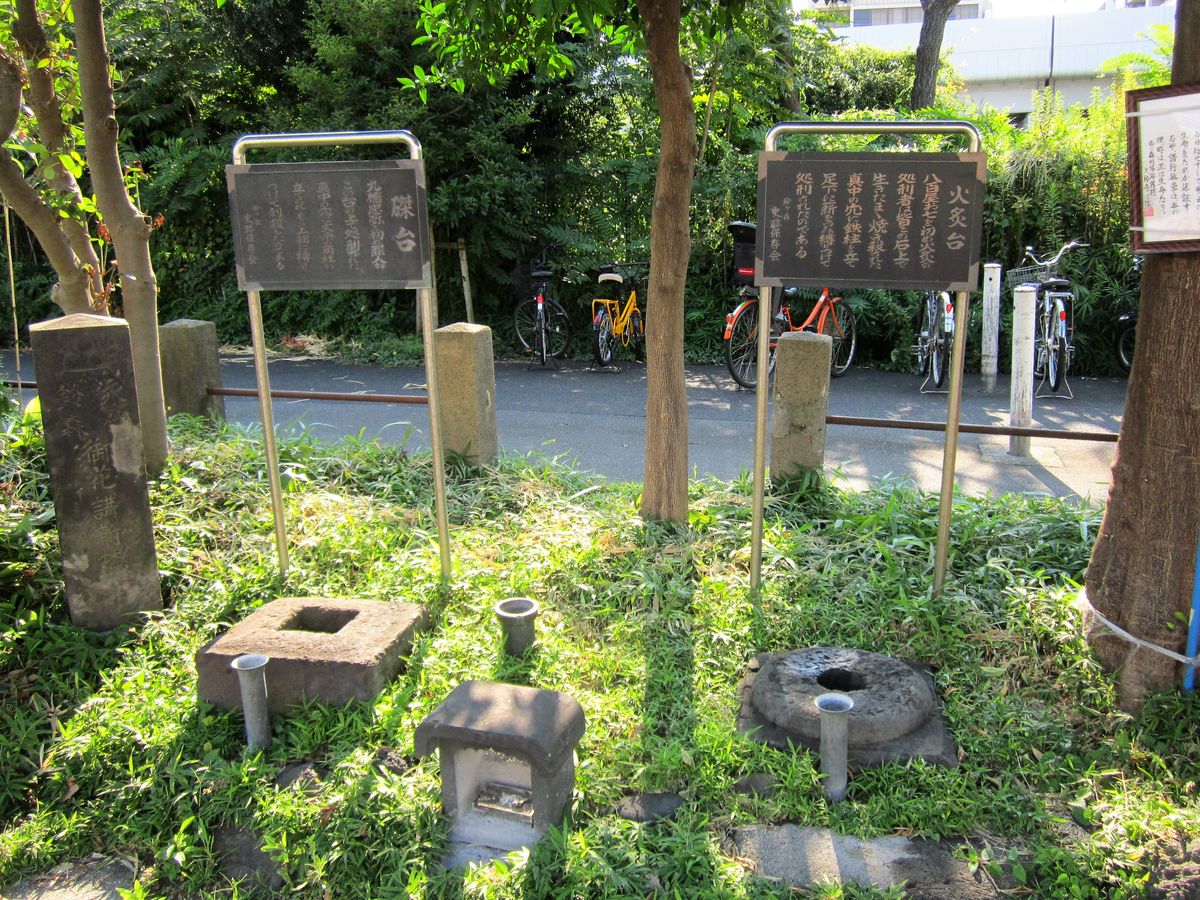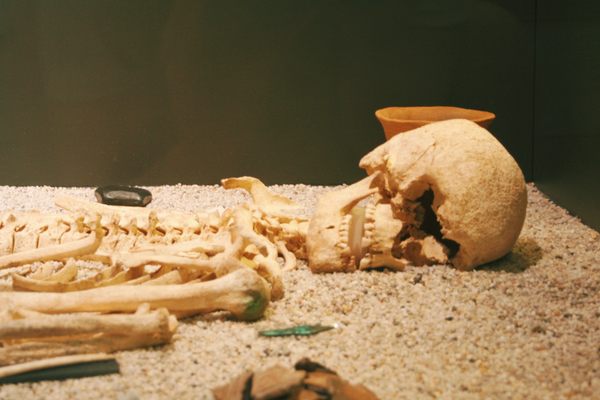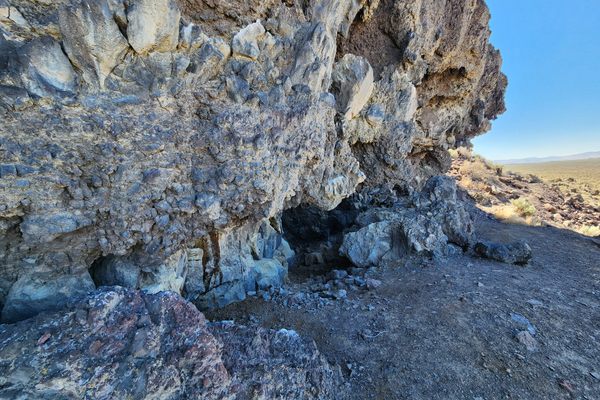About
Years of civil war in Japan ended when Tokugawa Ieyasu defeated all his rivals becoming the Shogun or leader of Tokugawa Shogunate in 1600. He ruled from a sleepy village on the east coast, a city that would become the sprawling metropolis of Tokyo. One of the first things the city created was a place to execute criminals, political prisoners, and Christians, a banned religion in Japan at the time.
One of three sites used to execute prisoners, the Suzugamori Execution Ground (鈴ヶ森刑場), was established in 1651. It was placed right outside the gates of Edo as a warning for those who enter the capital, especially the rōnin, samurai scoundrels without a lord to serve under. The first prisoner to be executed here was Marubashi Chūya, one of the leaders of the failed Keian Uprising.
After this, 100,000 to 200,000 prisoners were reportedly executed at the site in the span of 220 years. Many were burned at the stake, and some crucified. The stone bases on which the stake and the crucifixion pillar are still here to this day. As the waters of Tokyo Bay were near today's Shinagawa area back then, many Christians were also put to death by suitaku. Literally meaning "water crucification," prisoners were bound to stakes and placed upside down in the bay until the tide grew high.
In 1692, German physician Engelbert Kaempfer walked past the site and wrote that the execution ground "was an ugly sight for the traveler: several human heads and disfigured bodies were lying thrown together... A large emaciated dog was rummaging with its hungry snout in a decaying human body."
Nearby, there is a bridge called Namidabashi, meaning "Bridge of Tears." This was due to the fact that the condemned prisoners were made to walk on it to get to the execution grounds.
Suzugamori was closed in 1871, but the site is still preserved today, if not as large as it used to be in the days of its glory. The Shinagawa City government has the grounds listed as one of 100 neighborhood places to visit. There are a temple and numerous monuments dedicated to the prisoners executed here, as well as a memorial for the koi fish once bred nearby. Also worth mentioning is the well where the decapitated heads are said to have been washed.
Related Tags
Know Before You Go
Close to following train stations:
Ōmori Station (大森駅, Ōmori-eki) is a train station operated by East Japan Railway Company (JR East).
Ōmorikaigan Station (大森海岸駅, Ōmori-Kaigan-eki) is a Keikyu station on the Keikyū Main Line.
Tachiaigawa Station (立会川駅, Tachiaigawa-eki) is a Keikyu station on the Keikyū Main Line.
It can also be visited from the popular Shinagawa Aquarium, about a 7-minute walk away.
Hidden Japan: Sado Island, Nara & Kyoto
Explore a different side of Japan.
Book NowCommunity Contributors
Added By
Published
July 24, 2020
Sources
- https://books.google.ca/books?id=Ad8bDQAAQBAJ&pg=PA29&dq=Suzugamori+Execution+Grounds+shinagawa&hl=en&sa=X&ved=2ahUKEwjHkbOa5KfqAhVbHzQIHX9-ACUQ6AEwAHoECAgQAg#v=onepage&q=Suzugamori%20Execution%20Grounds%20shinagawa&f=false
- https://books.google.ca/books?id=iL6aqGarFugC&pg=PA22&dq=Suzugamori+Execution+Grounds+shinagawa&hl=en&sa=X&ved=2ahUKEwjHkbOa5KfqAhVbHzQIHX9-ACUQ6AEwAXoECAEQAg#v=onepage&q=Suzugamori%20Execution%20Grounds%20shinagawa&f=false
- http://www.merit5.co.jp/gyosei/shinagawa/0607/0607_03.html









